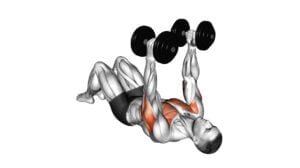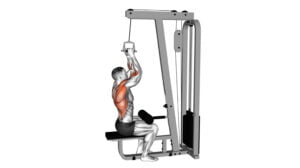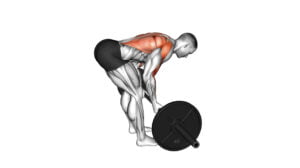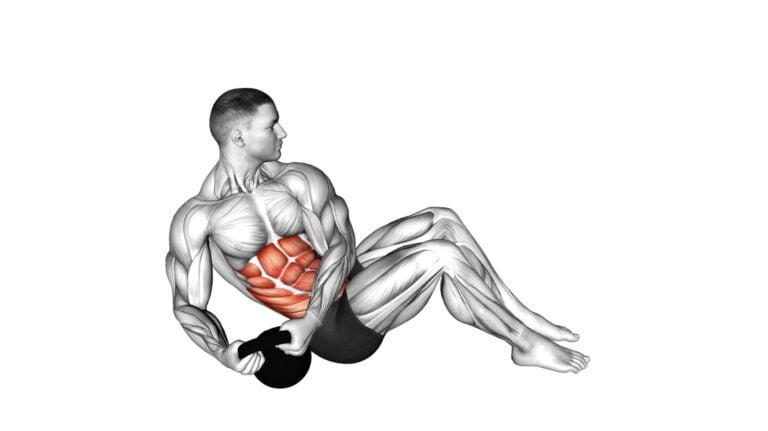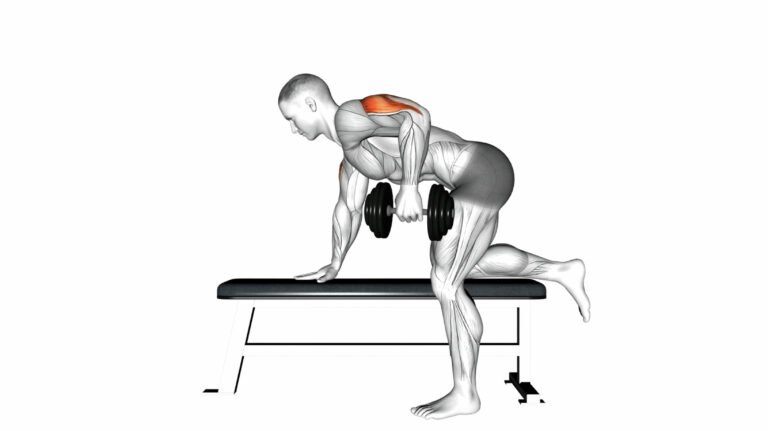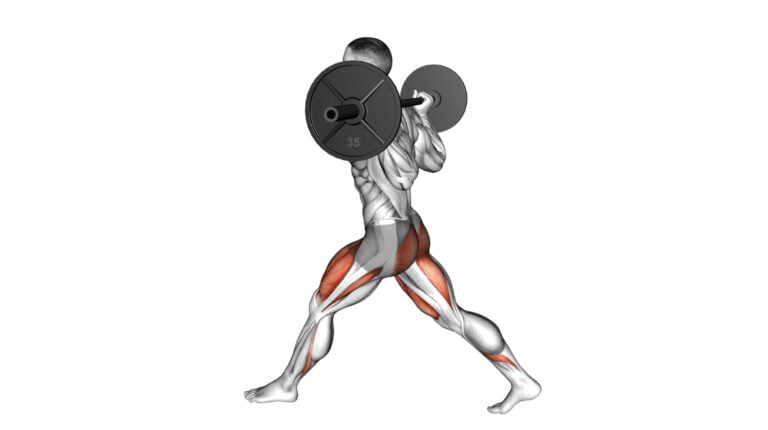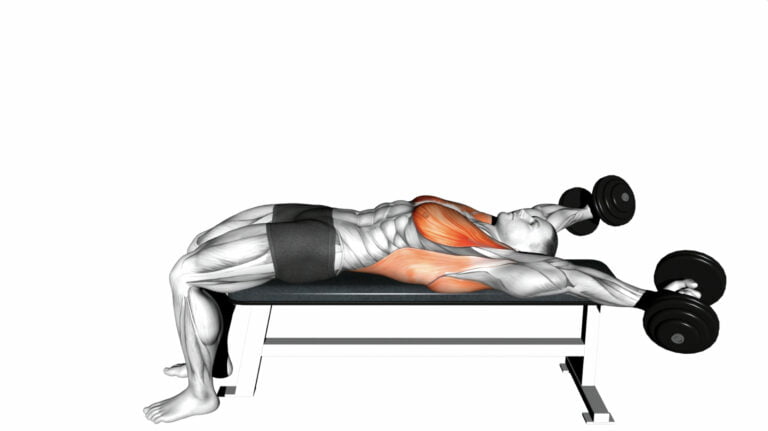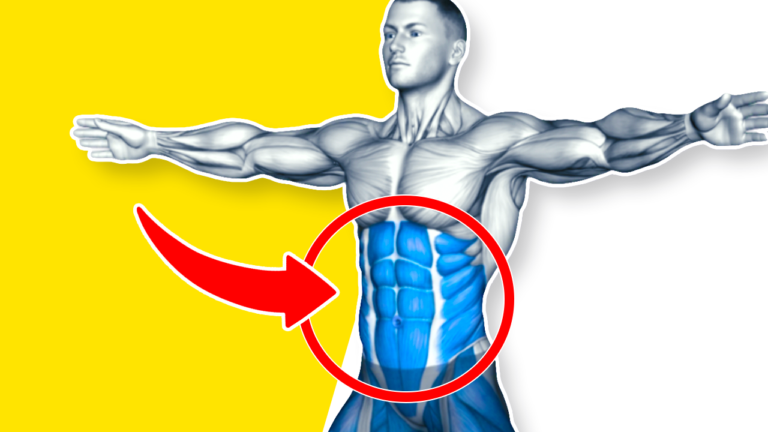10 Best Exercises For Thicker Back: Build Muscle And Strength
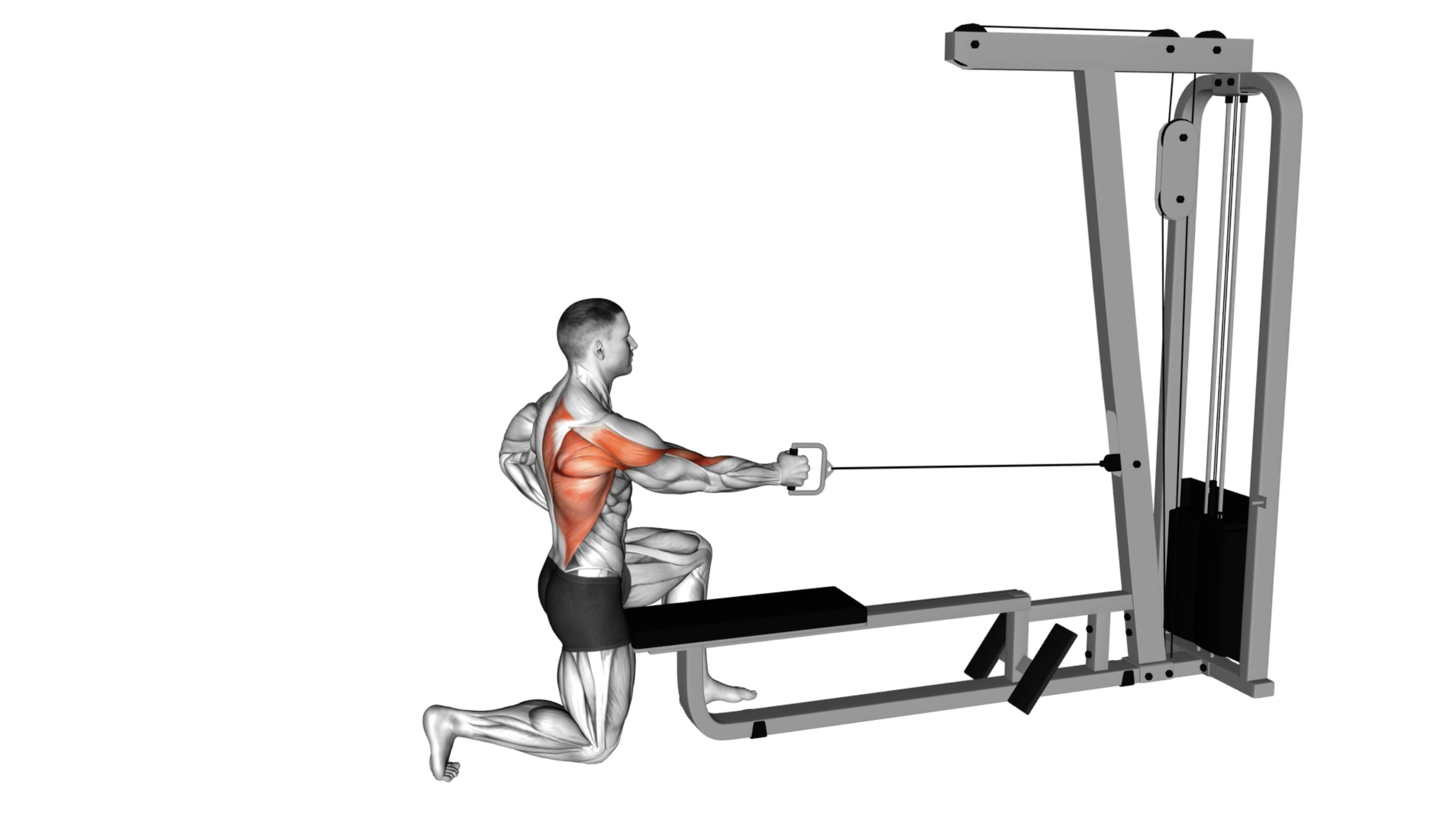
Building a thick, muscular back is not just for show; it’s the foundation of a robust and balanced upper body. With over a decade of experience as a certified personal trainer, I’ve seen countless gym-goers chase after massive arms and chests while neglecting their posterior muscles—a critical mistake that can lead to imbalances and injury.
The best exercises for thicker back target key muscle groups such as the latissimus dorsi, trapezius, and rhomboids, all essential in establishing that coveted V-taper silhouette.
The path to gaining serious thickness in your back involves more than random workouts; it requires strategic planning and execution. This article unpacks ten powerful exercises specifically chosen for their effectiveness in building both muscle mass and strength across your upper and lower back regions.
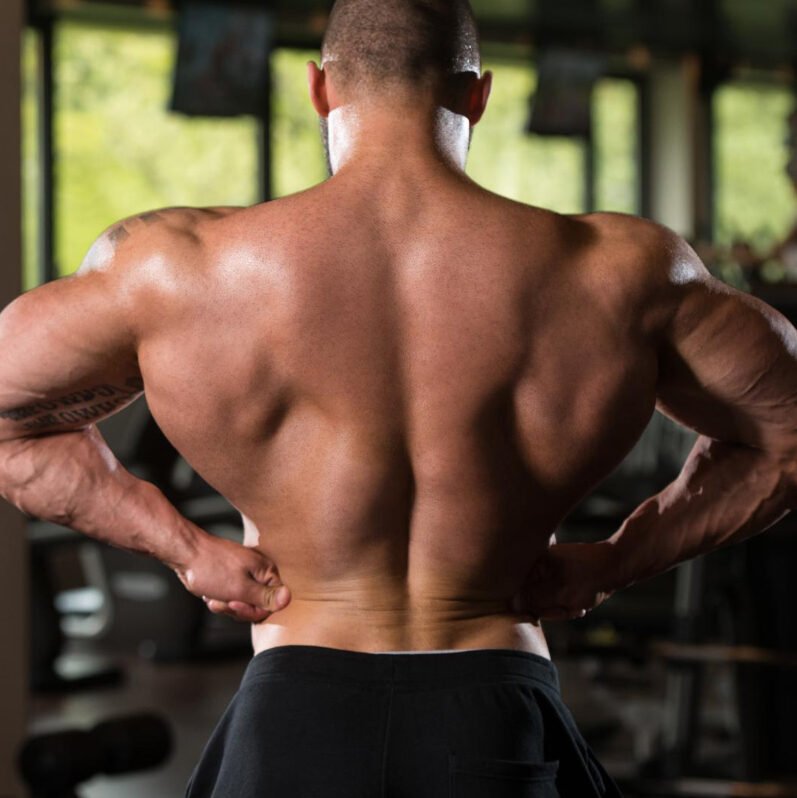
By incorporating these movements into your routine, you’ll be tapping into tried-and-true methods used by fitness enthusiasts worldwide to sculpt a broader, more powerful back. Let’s dive in and expand those horizons—one rep at a time!
Key Takeaways
- Building a thicker back not only enhances your physique but also strengthens muscles crucial for maintaining good posture and reducing the risk of injuries.
- The top exercises for building back thickness include variations of rows, pull – ups, and deadlifts that target different regions such as the latissimus dorsi, rhomboids, traps, and lower back.
- Proper form in each exercise is essential to engage the correct muscles effectively and avoid injury while aiming for recommended sets and reps ensures progressive overload for muscle growth.
- A variety of exercises should be included in your routine to prevent plateaus, balance out the body’s musculature, and keep workouts engaging.
- Rest intervals between sets are important for muscle recovery; short rest periods maintain workout intensity while longer breaks may be necessary when performing more demanding lifts.
Benefits of Building a Strong and Thick Back
Building a strong and thick back comes with several benefits, including improved posture, a more balanced physique, increased strength, and the ability to achieve a V-taper. These advantages can have a positive impact on your overall physical health and fitness.
Improved posture
Strengthening your back muscles is key to standing taller and eliminating slouch. Exercises like the lat pulldown or a well-executed deadlift work wonders for keeping your spine aligned and shoulders pulled back, which are essential elements of good posture.
Engaging in these movements regularly helps condition the lats, rear delts, and entire thoracic cage, promoting an upright stance that radiates confidence and strength.
Focusing on a strong back creates a solid foundation for other lifts as well. With improved stability from exercises targeting the scapula and spinal erectors, you’ll be able to maintain better form during squats or shoulder presses.
This not only enhances overall performance but also minimizes risk of injury by supporting proper alignment throughout various compound exercises and daily activities.
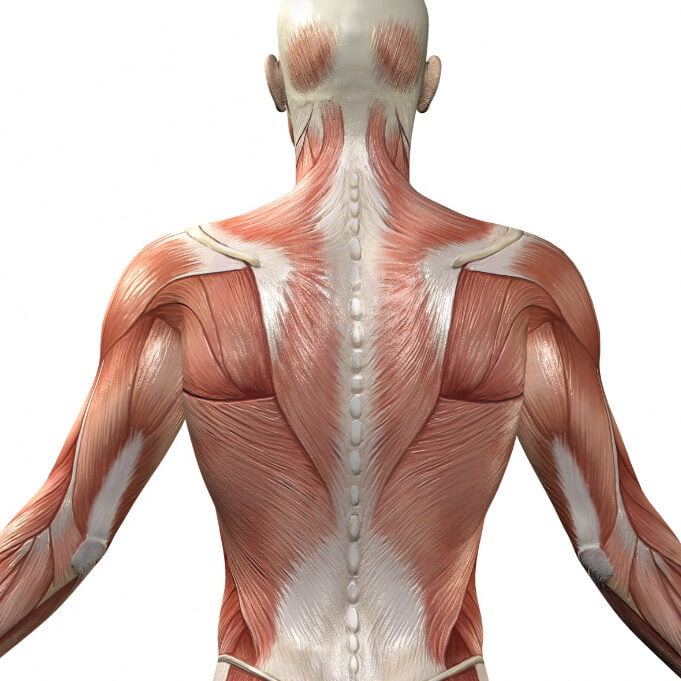
More balanced physique
Working on your back muscles leads to a more balanced physique that complements other muscle groups. A well-developed back can help counteract the chest focus from exercises like bench presses and push-ups.
This balance is crucial, as it contributes to overall muscular symmetry and helps in maintaining proper posture. It’s not just about looking good, though; a balanced body reduces the risk of injury by ensuring no single group of muscles becomes overdeveloped or overstrained.
Focusing on your back brings equilibrium to your body’s musculature, enhancing both aesthetics and function. With strong lats, rhomboids, and traps, you’ll see improvements when engaging in compound movements such as deadlifts where the entire posterior chain is activated.
As we build strength for these critical lifts, let’s move into our next topic: “Increased strength”.
Increased strength
Building a thicker back directly contributes to increased strength throughout your entire body. Strong back muscles support a robust core, vital for everyday movements and advanced exercises.
From picking up groceries to performing deadlifts, enhanced muscular power in your back helps you lift heavier weights with better stability. This added strength isn’t just functional; it’s essential for sports performance and can take your athletic abilities to new heights.
Pursuing a workout routine focused on the back pays off by fortifying muscles like the latissimus dorsi, trapezius, and erector spinae. These muscle groups are instrumental in powerful pulling motions and maintaining correct posture during weightlifting moves such as rows, pull-ups, and snatches.
Training your back leads not only to visual improvements but also increases overall muscle endurance and lifting capacity across different exercises. As you engage these muscles consistently, both hypertrophy and brute force amplify – equipping you with the necessary prowess for challenging workouts and daily tasks alike.
Achieving a V-taper
To achieve a V-taper, focus on building width in the upper back and shoulders while keeping the waistline tight. Emphasize exercises such as pull-ups, lat pull-downs, and wide-grip rows to target the lats and create that desired broadness across the upper body.
Incorporating rear deltoid and rotator cuff exercises can also help balance out your physique, contributing to an aesthetically pleasing V-taper. Additionally, engaging in compound movements like deadlifts and squats can promote overall muscle growth, enhancing your V-taper visually.
Proper nutrition plays a crucial role in achieving a V-taper; maintaining a lean body composition through healthy eating habits can accentuate your back’s muscular definition. By consistently focusing on these targeted exercises along with proper nutrition, you can work towards sculpting a defined and impressive V-taper physique.
The 10 Best Exercises for a Thicker Back
Get ready to supercharge your back workouts with these 10 best exercises for a thicker back. Read on to learn how these exercises can help you build muscle and strength in your back.
1. Cable Elevated Row
The Cable Elevated Row is an effective exercise that targets the upper back and helps build thickness and strength. To perform this exercise, attach a long bar to the cable machine at shoulder height, and then position yourself a few steps in front of the machine.
Hold the bar with an overhand grip, keeping your arms extended straight out in front of you. With your feet flat on the floor, lean back slightly while maintaining a straight posture.
Pull the bar towards your abdomen by retracting your shoulder blades, then slowly return to the starting position while controlling the weight.
This exercise engages various muscles including the latissimus dorsi, rhomboids, and trapezius as well as providing stabilization for shoulder joint health. It also emphasizes scapular retraction which is crucial for developing back thickness and overall posture improvement.
2. Cable Bent Over Row
Engage your back muscles effectively with the Cable Bent Over Row. Set the cable machine to a low position, pick up the handles, and stand a few steps back. Maintaining a slight bend in your knees and hinging at your hips, keep your back straight as you pull the handles towards you, squeezing your shoulder blades together at the peak of the movement.
Focus on controlling the weight during both the concentric and eccentric phases of this exercise for maximum benefit and reduced risk of injury.
Integrate variations in grip width to target different areas of your back muscles. Experiment with underhand, overhand, or neutral grips to engage various muscle groups within your broadest muscle – latissimus dorsi – and develop a well-rounded back profile that contributes to improved posture and overall strength gains.
3. Cable Half Kneeling Single Arm Row
The Cable Half Kneeling Single Arm Row is a valuable exercise that targets the lats, rhomboids, and lower traps. Maintaining a stable kneeling position while performing the row engages the core and stabilizing muscles for added benefits.
This exercise also helps to correct muscle imbalances between your left and right sides due to its unilateral nature.
Executing this move with proper form ensures maximum engagement of the targeted muscles without straining other parts of your body. By incorporating this exercise into your back workout routine, you can effectively develop strength and muscular balance in your upper body.
4. Leverage Machine Neutral Grip Seated Row
Engage your back muscles effectively with the Leverage Machine Neutral Grip Seated Row. Sit comfortably on the machine, grasp the handles with a neutral grip, and pull towards your torso, focusing on squeezing your shoulder blades together at the peak of the movement.
This exercise targets your mid-back and lats while reducing strain on your wrists and elbows due to its neutral grip.
To maximize effectiveness, maintain a straight posture throughout the movement and focus on controlled repetitions rather than using momentum. Incorporating this exercise into your routine can help build thickness in your back while minimizing stress on other muscle groups.
5. Dumbbell Bent-over Row
Transitioning from the Leverage Machine Neutral Grip Seated Row to the Dumbbell Bent-over Row, this exercise targets your lats, rhomboids, and traps while engaging your core for stability.
Begin by holding a dumbbell in each hand and bending slightly at the knees. Hinge forward at your hips until your torso is nearly parallel to the ground. Keep a neutral spine as you pull the weights towards your ribs, squeezing your shoulder blades together at the top of the movement.
Lower back down with control to complete one repetition.
Maintain proper form throughout each rep to minimize strain on your lower back and maximize engagement of targeted muscles such as the latissimus dorsi, teres major, and posterior deltoids.
6. Dumbbell Hammer Grip Incline Bench Two Arm Row
Transitioning from the Dumbbell Bent-over Row, another excellent exercise for building a thicker back is the Dumbbell Hammer Grip Incline Bench Two Arm Row. This workout targets your lats, rhomboids, and traps while also engaging your biceps.
By using a hammer grip on an incline bench, you can effectively isolate and engage different muscles in your upper back.
To perform this exercise, sit on an incline bench with dumbbells in each hand hanging down. Retract your shoulder blades and pull the weights toward your sides, keeping your elbows close to your body.
7. Barbell Bent Over Wide Grip Row
The Barbell Bent Over Wide Grip Row is an effective back exercise that targets the lats, rhomboids, and traps. Holding a barbell with a wide grip while bending at the waist engages the upper back muscles to pull the weight towards your torso.
By keeping your elbows close to your body throughout the movement, you can maximize muscle engagement and build strength in your back. This exercise also helps improve posture and supports overall stability as it works on multiple muscles simultaneously.
8. Barbell Reverse Grip Incline Bench Row
Transitioning from the Barbell Bent Over Wide Grip Row to the Barbell Reverse Grip Incline Bench Row, this exercise targets the upper back and lats while also engaging the biceps. Set an incline bench to around 45 degrees, position yourself face down with your chest on the bench, and grasp a barbell using an underhand grip.
Pull the bar towards your lower chest while retracting your shoulder blades, then lower it back down in a controlled manner.
Executing the Barbell Reverse Grip Incline Bench Row works to develop thickness in your upper back and enhances overall pulling strength. This exercise activates key muscle groups including the latissimus dorsi, rhomboids, and biceps for a comprehensive back workout that fosters growth and strength.
9. Smith Machine Bent Over Row
Engage your back muscles and improve strength with the Smith Machine Bent Over Row. Learn how to maximize this exercise for a thicker back by reading more.
10. Smith Machine Narrow Row
Transitioning from the Smith Machine Bent Over Row to the Smith Machine Narrow Row, this exercise is an effective way to target your middle and lower trapezius muscles while also engaging your rhomboids.
By utilizing a narrow grip on the Smith machine, you can isolate these specific back muscles more intensely compared to wider grips. This movement promotes better scapular retraction, which helps in achieving a thicker and stronger back.
Perform the Smith Machine Narrow Row with controlled movements, ensuring that you squeeze your shoulder blades together at the peak of each repetition for maximum muscle engagement.
Tips for Optimizing Your Back Workouts
To optimize your back workouts, start with a proper warm-up and choose the right weight for each exercise. Focus on maintaining proper form throughout each movement and incorporate variety into your routine to target different muscle groups effectively.
Remember to take adequate rest intervals between sets and maintain recommended sets and reps for optimal results.
Proper warm-up
Before diving into your back workout, a proper warm-up is essential to prepare your muscles for the upcoming exercises. Begin with 5-10 minutes of light cardio, such as brisk walking, cycling, or jumping jacks, to increase blood flow and elevate your heart rate.
Follow this with dynamic stretches targeting your back muscles and surrounding areas. Perform movements like arm circles, torso twists, and shoulder rolls to loosen up and activate the muscle groups you will be focusing on during your workout.
Next, incorporate specific warm-up sets for the first exercise in your routine. Use lighter weights than what you plan to lift during your working sets. Aim for 2-3 sets of 12-15 reps with controlled movements to prime the targeted muscles further.
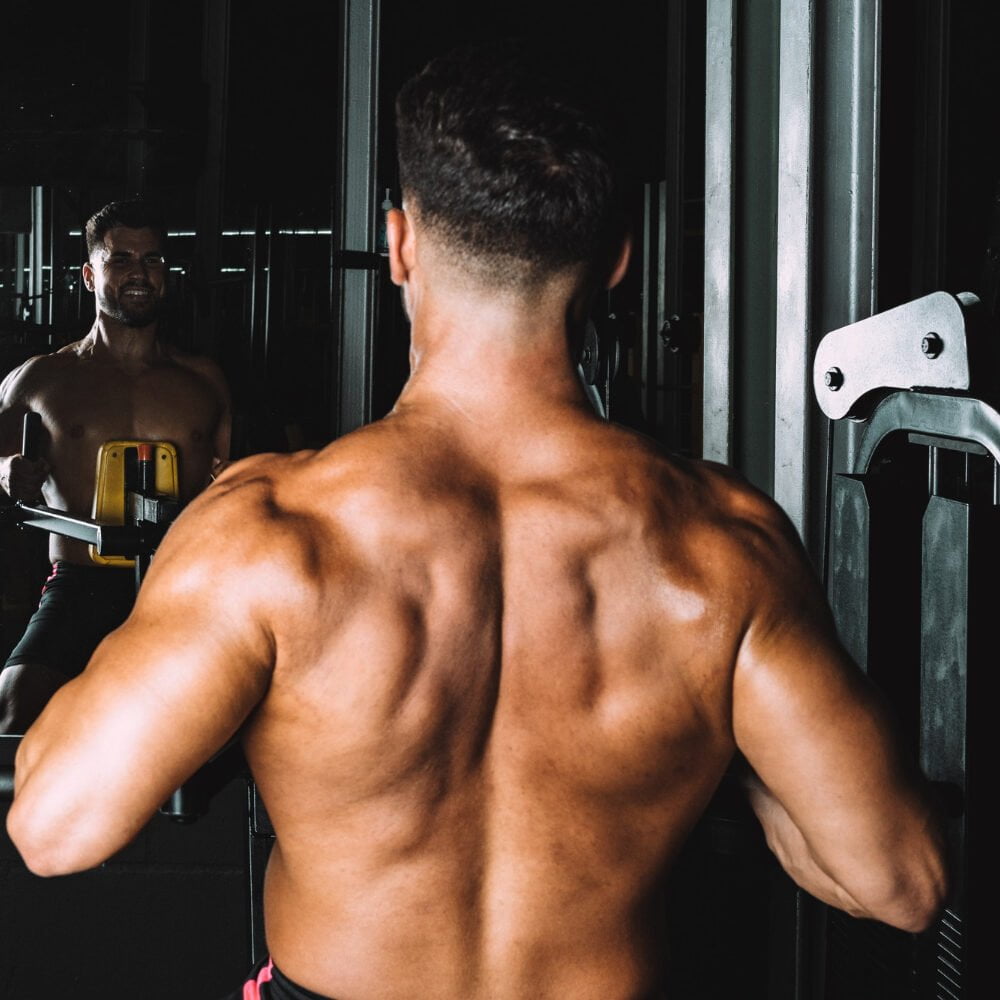
Choosing the right weight
After properly warming up, the next crucial step is choosing the right weight for your back workouts. The key is to select a weight that allows you to complete each exercise with proper form while still challenging your muscles.
As an essential guideline, start with a weight that enables you to perform 8-12 reps without compromising on your technique. It’s vital to find a balance where the last few repetitions are challenging but still achievable without sacrificing form.
While perfecting your form and preventing injury should be prioritized, don’t be afraid to gradually increase the weight as you get stronger. Progressively overloading your muscles by increasing the resistance will help stimulate growth and strength development in your back muscles.
Maintaining proper form
Maintain proper form during each exercise to prevent injury and maximize the effectiveness of your back workouts. Focus on keeping your back straight, shoulders pulled back, and core engaged.
Avoid excessive swinging or jerking movements to ensure that the targeted muscles are properly engaged throughout the entire range of motion.
Concentrate on controlled movements, feeling the contraction in your back muscles with each repetition. Keep your neck in a neutral position to avoid strain and maintain a smooth, steady pace without rushing through the exercises.
Recommended Sets And Reps
To optimize your back workout and achieve the best results, it’s important to follow recommended sets and reps for each exercise. Here’s a detailed breakdown:
- Cable Elevated Row: Aim for 3-4 sets of 8-12 reps to focus on building strength and muscle endurance in your upper back.
- Cable Bent Over Row: Perform 4 sets of 10-12 reps to effectively target your lats and rhomboids while also engaging your core for stability.
- Cable Half Kneeling Single Arm Row: Complete 3 sets of 12-15 reps on each side to enhance unilateral strength and improve muscular balance.
- Leverage Machine Neutral Grip Seated Row: Incorporate 4 sets of 8-10 reps with controlled movements to develop overall back thickness and strength.
- Dumbbell Bent-over Row: Execute 3 sets of 8-10 reps with a challenging weight to promote hypertrophy in the mid-back muscles.
- Dumbbell Hammer Grip Incline Bench Two Arm Row: Perform 3 sets of 10-12 reps on an incline bench to emphasize the upper back and rear deltoids.
- Barbell Bent Over Wide Grip Row: Aim for 4 sets of 8-10 reps with strict form to target the latissimus dorsi and improve overall back width.
- Barbell Reverse Grip Incline Bench Row: Execute 3 sets of 10-12 reps on an incline bench with a reverse grip to engage the lower lats and improve thickness.
- Smith Machine Bent Over Row: Complete 4 sets of 8-10 reps using the Smith machine for added stability while focusing on upper back development.
- Smith Machine Narrow Row: Incorporate narrow grip rows with 3 sets of 12-15 reps to isolate the mid-back muscles and enhance detail.
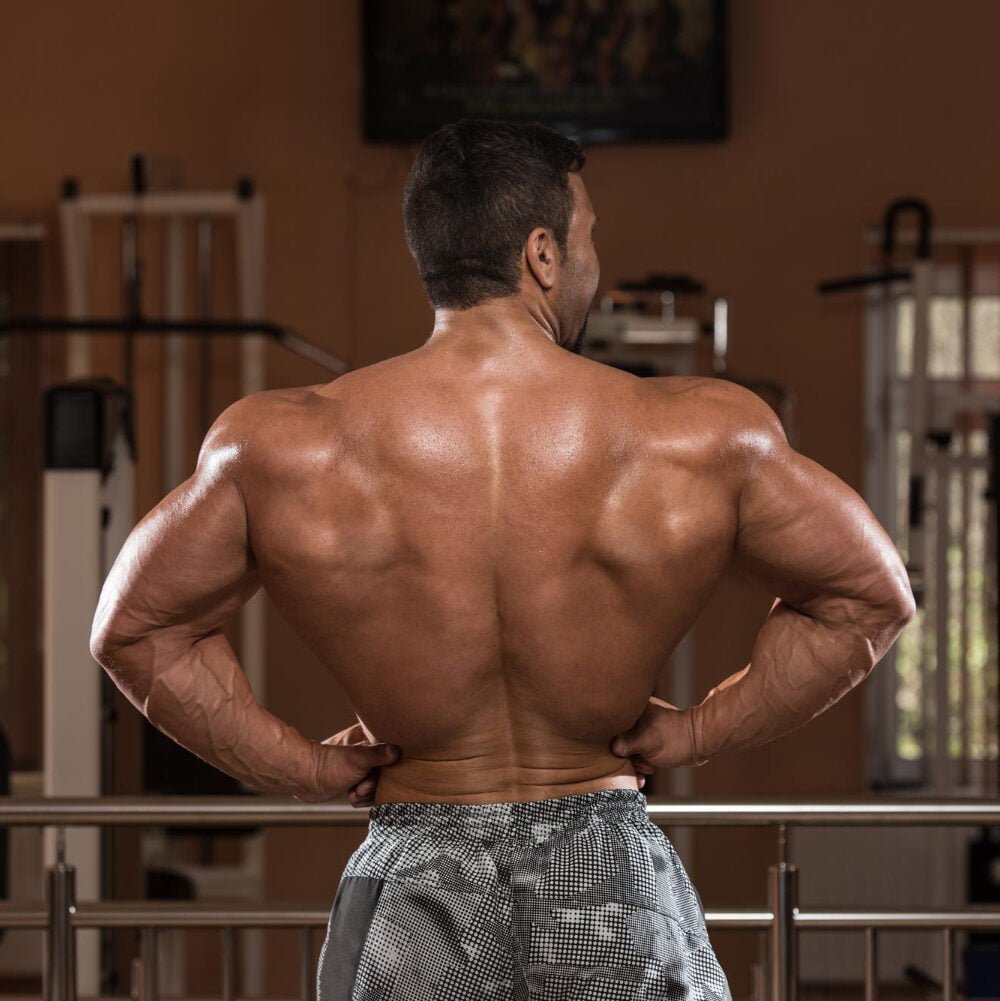
Incorporating variety
To optimize your back workouts, it’s important to incorporate a variety of exercises. This not only helps prevent boredom but also ensures that all the muscles in your back are being effectively targeted.
Variety can be introduced by changing up the types of rows, adding in pull-ups or chin-ups, incorporating different grip positions, and including isolation exercises for smaller muscle groups.
By varying your exercises, you can stimulate muscle growth from different angles and keep your workouts challenging and engaging.
Introducing new elements such as using resistance bands or kettlebells can also add diversity to your routine. Furthermore, integrating compound movements like deadlifts and squats not only adds variety but also enhances overall strength and stability while engaging various muscles in the back region.
Keeping proper rest intervals
Rest intervals are crucial for allowing your muscles to recover and grow. When it comes to back workouts, ensuring you take adequate rest between sets is vital for maximizing muscle development.
Aim for rest periods of around 1-2 minutes between sets to allow your muscles to recuperate while maintaining the intensity of your workout. Longer rest intervals may be necessary when lifting heavy weights or performing highly demanding exercises such as deadlifts or pull-ups.
To optimize your back training, listen to your body’s signals and adapt the rest intervals according to how fatigued your muscles feel. By doing so, you can maintain a high level of performance throughout your workout and achieve better results.
Conclusion

In conclusion, incorporating these best exercises for a thicker back into your workout routine can lead to significant improvements in muscle and strength. When it comes to building a strong and thick back, the practical tips and efficient exercises provided can help you achieve your fitness goals effectively.
Have you considered how implementing these strategies could impact your overall physique and strength? Striving towards a thicker back through these exercises is an important step towards achieving a more balanced physique and improved posture.
As you embark on this journey, remember that consistency and dedication are key to seeing results.
FAQs
1. What are the best exercises for building a thicker back?
To build muscle and strength in your back, focus on exercises like deadlifts, both conventional and Romanian varieties, lat pulldowns, front squats, pull-ups including chinups and pullups variations, as well as rear delt flys to target specific muscles such as your infraspinatus and teres minor.
2. How do deadlifts help in thickening the back?
Deadlifting engages multiple muscles including the lower back’s erector spinae, glutes, hamstrings, core strength components—and doing them with proper form can massively contribute to a thicker vertebral column supportive area leading up to stronger lifts overall.
3. Can only weightlifters benefit from these back exercises?
Not at all! While Olympic weightlifting movements like power cleans are common among strongmen and bodybuilders due to their anatomy-centric benefits; regular gym-goers can also gain increased thickness through various forms of rows or isometrically engaging moves such as planks that emphasize muscular development without necessarily lifting heavy weights.
4. Are there any specific tools needed for these back-building exercises?
Indeed! Exercises such as pull-ups will require access to a sturdy pull-up bar while performing certain types of deadlifting might prompt you to consider using weightlifting belts or Olympic barbells equipped with bumper plates; however most often you’ll just need your bodyweight or standard gym equipment like dumbbells.
5. Is it important to work on other body parts along with my back for balance?
Absolutely! Your triceps act synergistically during pushes whereas pecs undergo flexion when involved in chest-focused flyes; maintaining balance by training complementary parts ensures steady progression avoiding imbalances which could lead to injuries or disproportionate development.
6. Does improving my back thickness impact other areas of fitness?
Thicker backs usually signify enhanced core stability allowing better performance across different kinds of movements from squatting patterns involving the belly upfront i.e., front squats down towards pulling motions wherein handgrip plays an essential role amass substantial gains by incorporating diverse strategies aimed at broadening one’s strength spectrum!

Author
Years ago, the spark of my life’s passion ignited in my mind the moment I stepped into the local gym for the first time. The inaugural bead of perspiration, the initial endeavor, the very first surge of endorphins, and a sense of pride that washed over me post-workout marked the beginning of my deep-seated interest in strength sports, fitness, and sports nutrition. This very curiosity blossomed rapidly into a profound fascination, propelling me to earn a Master’s degree in Physical Education from the Academy of Physical Education in Krakow, followed by a Sports Manager diploma from the Jagiellonian University. My journey of growth led me to gain more specialized qualifications, such as being a certified personal trainer with a focus on sports dietetics, a lifeguard, and an instructor for wellness and corrective gymnastics. Theoretical knowledge paired seamlessly with practical experience, reinforcing my belief that the transformation of individuals under my guidance was also a reflection of my personal growth. This belief holds true even today. Each day, I strive to push the boundaries and explore new realms. These realms gently elevate me to greater heights. The unique combination of passion for my field and the continuous quest for growth fuels my drive to break new ground.

